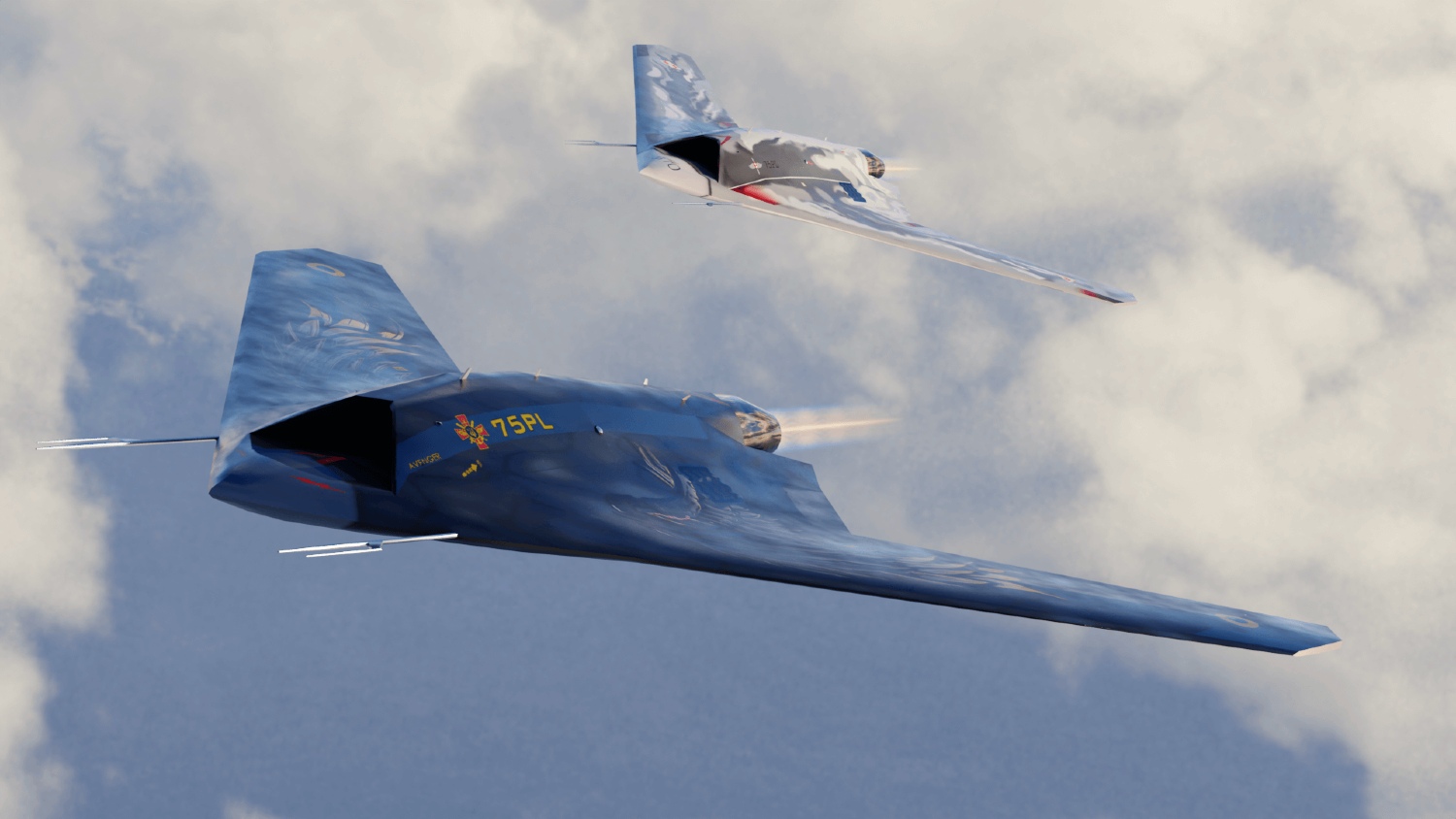Russia’s fifth-generation fighter jet, the Su-57, is set to enhance its capabilities by incorporating newly developed mini-drones, according to reports in Russian media.
The report claimed that the miniature unmanned aerial vehicles (UAVs) have been specifically designed for deployment on the Su-57, with the aircraft equipped to carry them externally on a sling or in its fuselage compartment, allowing for mid-air release.
The disclosed strategy involves the simultaneous launch of multiple drones, with the fighter jet overseeing and controlling the group’s collective actions, the report claimed, citing the source.
The multi-faceted nature of these drones positions them as valuable assets in attack, reconnaissance, and electronic warfare scenarios. The envisioned tactic of deploying dozens of drones from a squadron of Su-57s aims to enable the fighters to penetrate enemy air defenses effectively.
This approach seeks to overwhelm the adversary by overloading information channels and executing targeted strikes on both systems and assets, utilizing a combination of drones and weaponry from the combat aircraft.
Previous reports suggested that there are modifications in the pipeline for the Su-57, aimed at enabling it to seamlessly control and coordinate a fleet of these compact unmanned aerial vehicles.
The developmental trajectory included the inception and refinement of specialized software. This software is poised to serve as the nerve center, facilitating a seamless exchange of information between the Su-57 and the deployed UAVs.
In tandem with the software advancements, specialized onboard equipment is being engineered to ensure the fighter’s compatibility with the requirements of the mini-drones. Furthermore, to ensure the efficacy of these modifications, a dedicated ground-based testing infrastructure is being established.
This critical phase in the developmental process involves rigorous testing and validation of the interaction systems between the Su-57 and the mini-drones, as well as the coordination mechanisms among the deployed UAVs themselves.
Loyal Wingman Of Russia’s Su-57 Fighter Jet
Russia is actively advancing the capabilities of its fifth-generation advanced fighter jet, the Sukhoi Su-57. While the latest reports have highlighted the development of mini drones, the S-70 Okhotnik (Hunter) drone, in particular, is poised to assume a crucial role alongside the Su-57.
Currently in development, the Hunter drone, expected to conclude testing by the end of this year, is slated for production commencement in early 2024.
The drone, developed by the Sukhoi Design Bureau, had its inaugural flight in August 2019. Subsequently, in September 2019, it carried out a flight in tandem with a Su-57, Russia’s fifth-generation fighter aircraft.
Russia defines the Okhotnik as a stealthy drone engineered with a minimized radar signature. This attribute allows the aircraft to penetrate defenses or approach enemy assets with a lower likelihood of being detected.
Moscow envisions the S-70 playing a vital “loyal wingman” role alongside the Su-57, addressing limitations in the manned aircraft’s design and ushering in innovative air combat synergies.

Unmanned combat aerial vehicles (UCAVs) have the potential to function ahead of their manned counterparts and provide pilots with information from their sensors. This aims to offer a more comprehensive and expansive view of the battlespace.
This data could facilitate the utilization of very long-range weapons by the Su-57s and will enable engagement with both airborne and ground targets while maintaining a safe distance from enemy air defenses and hostile fighters.
This approach will also offer a complementary means to optimize the aircraft’s features, such as its capacity to carry large munitions within its internal weapons bays.
Moreover, serving as a forward operating system, the Okhotnik can also be tasked with targeting approaching fighter and bomber aircraft, as well as rear-echelon assets like tankers and airborne early warning planes that support them.
While the primary mission for the S-70 is envisioned as a “loyal wingman,” Russia also foresees operating the Okhotnik-B independently, encompassing combat, intelligence, surveillance, and reconnaissance roles.
The overarching objective is to equip the UCAV with adaptability and enable it to carry a diverse array of sensors or weapons as dictated by mission requirements. Additionally, there is a focus on enabling the rapid integration of new systems and munitions over time.
Despite these advancements, the extent of Russian progress in enabling the Su-57 to control drones in real-time remains uncertain.
As Russia navigates this technological frontier, the evolving synergy between manned and unmanned platforms promises to redefine strategic paradigms and bolster the nation’s prowess in contemporary aerial warfare.
- Contact the author at ashishmichel(at)gmail.com
- Follow EurAsian Times on Google News




